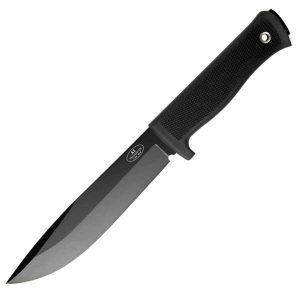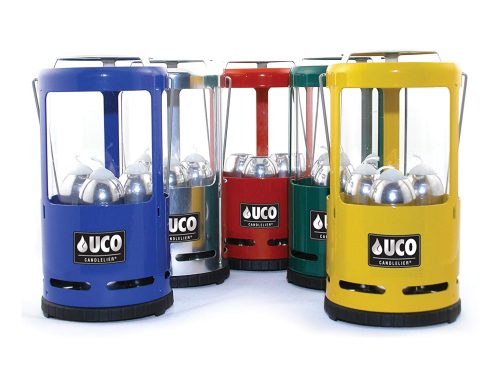Being in the outdoors is always a bit unpredictable, and things don’t always go as planned so you must be ready to face any situation that arises. A top-rated survival knife is one of the most important items of gear you take with you out on a hunt or a week-long camping trip into the outdoors. It may seem like a little tool but believe me, it is a survival tool that can be a life saver during any accident or troublesome situation. Don’t get caught in situation where you need a high quality and durable knife but don’t have one. Buy a top-rated survival knife that is built to last and with the most durable material. Steel, for example, is a great choice because of its quality, versatility, and value. Finding the best survival knife for your needs and understanding the features to look for is vital.
At Outdoorsmen Reviews we have researched, tested, ranked, and reviewed the best survival knife in 2022 to find which will provide the best performance, ease of use, and durability while out hunting, camping, hiking, or other outdoor activities. We rank each individual survival knife and discuss which features we consider to be the most important.
Top 5 Best Survival Knives in 2022:
- Gerber LMF II Survival Knife
- Ka-Bar Becker BK2 Campanion Fixed Blade Survival Knife
- Fallkniven A1 Kraton Survival Knife
- ESEE 6P-B Plain Edge Fixed Blade Survival Knife
- Buck 119BKS 6 Inch Blade Survival Knife
Choosing the Best Survival Knife – What is a Survival Knife?
A survival knife is designed and develop for survival situations in an outdoor wilderness setting. For example, the military issues survival knives to their troops in case they are separated from their equipment. The best type of survival knife is a fixed blade or a non-folding knife, because it’s durability, reliability, and overall strength.
I think we all can agree, that a survival knife is necessary for your safety but what specific uses does a survival knife have? For example, survival knives can be used for food preparation, splitting wood, wood carving, removing a splinter, first aid purposes, self-defense against wildlife, hunting weapon, hammering or pound, temporary screwdriver, building a shelter, digging, cutting rope or other material, trapping, skinning, and many more uses.
A survival knife is one of the most vital piece of equipment in your survival kit. With a proper survival knife you can do a lot to get by in the wilderness. Legit survival knives should have the capacity to do the tasks required in a survival situation such as cutting through larger pieces of wood to split firewood or construct a temporary shelter. So here are some things that you need to look for when choosing a survival knife. Keep in mind, a higher price does not always mean that you will get better quality, so focus on the quality and features rather than the price tag.
2022’s Best Survival Knife Reviews
#1 Gerber LMF II Survival Knife

Click here for customer reviews, price, and more information on Amazon!
#2 Ka-Bar Becker BK2 Campanion Fixed Blade Survival Knife

Click here for customer reviews, price, and more information on Amazon!
#3 Fallkniven A1 Kraton Survival Knife

Click here for customer reviews, price, and more information on Amazon!
#4 ESEE 6P-B Plain Edge Fixed Blade Survival Knife

Click here for customer reviews, price, and more information on Amazon!
#5 Buck 119BKS 6 Inch Blade Survival Knife

Click here for customer reviews, price, and more information on Amazon!
Honorable Mention: SOG Specialty Knives & Tools SE37-K Seal Team Elite Survival Knife Partially Serrated

Click here for customer reviews, price, and more information on Amazon!
Honorable Mention: Gerber Bear Grylls Ultimate Pro Survival Knife, Fine Edge

Click here for customer reviews, price, and more information on Amazon!
Should My Survival Knife Be Fixed Blade or a Folding Blade?
The blade is the main part of knife and it requires the most consideration while picking a knife. We only recommend using a fixed blade survival knife. A folding knife would not be viewed as a “survival knife.” Folding blades are easy to carry and great for certain situations but are not so great in a survival situation. So, only go for a fixed blade that can be useful according to your needs.
Folding blades do have their place; however, they don’t compare to a fixed blade knife in a survival situation. Folding blades are great for small tasks like feathering wood, removing a splinter, cutting hair, cutting food or fruit and we would still recommend having one as part of your equipment and gear.
Survival Knife Size and Length
Most fixed blade survival knives generally range from 6 to 12 inches. Any smaller and it would not be sufficient to do more of the tougher tasks you might need to do in a survival circumstance, such as cleaving wood, building a shelter, etc. If your survival knife is any bigger it would not be ideal for detailed type of tasks, such as dressing and skinning small game, or removing a splinter from your finger. If the knife is bigger than 12 inches, it is most likely a specialty blade for specific purposes, like a machete for cutting through thick forest or jungle areas. We have found that the ideal size for the best survival knife is between 8 and 11 inches as it can perform both detailed and rugged tasks.
It is good idea for you to think through various survival situations that you may realistically experience in the outdoors and what size of knife you would prefer. This may help determine what size of blade and survival knife will be best for you in your situation.
Only Full Tang Blade for Your Survival Knife
If you want full grip and reliability your survival knife, then full tang is the only way to go. What is the difference between full tang vs partial or half tang knives? “Full tang” demonstrates that the edge and handle is built from one full piece of metal. Scales or grasps are commonly joined to the handle for a more sturdy hold. The blade on a partial or half tang knife does not extend into a full hence, hence the partial or half terminology. A full tang knife is better, more durable, and stronger than a partial tang knife and is the only way to go in any survival situation.
The Best Survival Knife Will Have a Pointed or Sharp Tip
A survival knife can have many different types of tips including flat, angled, rounded, and hooked tips. In most situations we would recommend buying a survival knife with a pointed tip. Pointed tips are best for many scenarios, for example, when using it as a hunting weapon or when converting your knife into a spear for fishing, it will outperform any of the other tips mentioned above because of the ability to easily penetrate. It will also make it easier to clean and dress the fish once you have caught it.
Other reasons we prefer a pointed or sharp tip is because it is better for all of the following purposes; self-defense, removing painful splinters, drilling, using as a temporary screwdriver, prying, picking, repairing other equipment including clothes, food preparation, and many other reasons not mentioned here. So, unless you know you will have a specific need for a flat, angled, rounded or hooked tip, then a sharp pointed tip on your survival knife is going to be your best bet.
Which Type of Steel is Best? – Don’t Go Cheap!
One of the primary things you will need to evaluate is what type of steel your survival knife is built with. Obviously, you will want to choose a type of steel that will last. Generally, steel utilized for knife blades can be separated into three classifications:
- Carbon steel
- Tool steel
- Stainless steel
It is important to understand that inside each of those three classifications there are many diverse sorts of steel each with their own individual qualities. For EDC knives, everyday knives you carry with you, stainless steel is a great option because they require lower maintenance when used a lot and are less likely to rust over time. They are however, a little more prone to break and are harder to sharpen.
Carbon steel, adversely, is much easier to sharpen and is the strongest type of steel mentioned above. It is great for heavy duty use and will handle a tough beating better than a stainless steel knife. Although, if carbon steel blades are not taken care of properly they may rust or stain. Survival knives built with carbon steel are the way to go in most situations since you will want the strongest and most durable type of steel in a life or death situation.
Weight and Thickness of a Survival Knife
An easy to carry and lightweight knife is the best for survival situations. Heavy knives may be suitable for many heavy tasks but if your knife is easy to carry it’s just another bonus of you as the owner. But do not compromise the needed thickness of a knife for a lighter weight knife.
Another vital consideration is the thickness of your survival knife’s blade. Thickness, like the type of steel, or full tang blades, determines the strength and durability of the knife. This is going to be important for such activities as chopping thick wood, or prying heavy duty material. The suggested thickness of the best survival knives is between 5/32 (0.16) inches to 1/4 (0.25) inches.
Handle Grip Style and Material
Another critical factor to consider while choosing a survival knife is the material from which the handle is made with. It should be both durable and able to resist water penetration to counteract decay. The most popuar handle material for survival knives are today’s modern synthetic materials. Zytel, Valox, Kraton, Micarta, to name a few but really any synthetic rubber material would do well in most outdoor situations, blistering heat or freezing cold.
Handle grip style in addition to material is very important. You will want to find a knife that fit comfortably in your hand. Survival knives that come with finger guards and a solid butt of the knife help in preventing an accidental slip of your hand which could escalate any wilderness situation. Another reason why a larger butt of the knife is useful, is whenever you need to use your survival knife hammering or pounding. It will allow you to use the force necessary to get the job done.
Best Survival Knives in 2022 Recap:
- Gerber LMF II Survival Knife
- Ka-Bar Becker BK2 Campanion Fixed Blade Survival Knife
- Fallkniven A1 Kraton Survival Knife
- ESEE 6P-B Plain Edge Fixed Blade Survival Knife
- Buck 119BKS 6 Inch Blade Survival Knife
Honorable Mention: SOG Specialty Knives & Tools SE37-K Seal Team Elite Knife Partially Serrated Fixed Heat Treated 7-Inch AUS-8 Steel Blade
Honorable Mention: Gerber Bear Grylls Ultimate Pro Survival Knife, Fine Edge
Do or Do Not, there is No Try – Find the Best Survival Knife for You
A survival knife may be the final factor of life or death so do not make a decision lightly. If you consider all of the following features above, fixed blade, length and thickness of the blade, handle grip, type of steel, and type of knife tip, you should be just fine. One suggestion we have is to practice, practice, practice your skills. Experience and repetition is the best way to acquire skills. The proper survival knife and the proper skillset will go a long way in any sticky situation. But most importantly, find the best survival knife for your needs.





